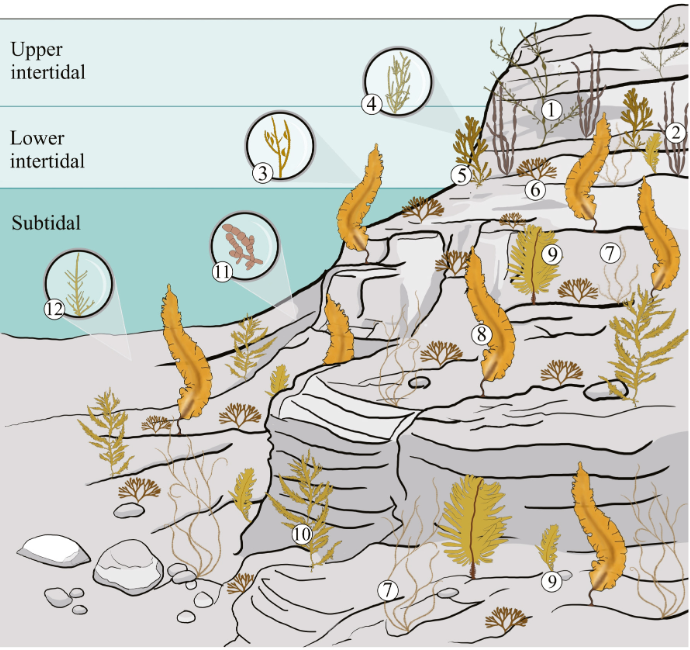Brown Algae (Phaeophyceae) are complex multicellular organisms that evolved from photosynthetic stramenopiles about 450 million years ago. They are key components of coastal ecosystems due to their tough and flexible cell walls, unique metabolic pathways, and diverse life histories. The cell wall and metabolic pathways give brown algae the ability to resist environmental stress and predation, while the life history of alternating generations enhances its adaptability and ecological stability. These characteristics allow it to not only support material recycling and carbon fixation, but also provide habitat for marine life by building kelp forests to maintain the function and stability of the ecosystem. However, Seaweed populations have declined significantly in recent years due to climate change. Studying its genomic evolution and biology could help protect this brown algae ecosystem.
Recently, J. Mark Cock from Sorbonne Université and others jointly published an article titled "Evolutionary genomics of the emergence of brown algae as key components of coastal ecosystems" in Cell. They explored the evolutionary history of Brown Algal Genomes, focusing on gene family amplification, horizontal gene transfer (HGT), viral gene integration, and their impact on morphological and ecological adaptation.

Figure 1. Approximate location of key species sequenced in this project in the intertidal zone. (Denoeud, et al., 2024)
The researchers used long-read technology to sequence the genomes of 17 species of brown algae and constructed 43 draft genomes, densely covering the brown algae lineage. This work greatly increases the existing genome data of brown algae and lays a solid foundation for studying the evolution, gene function and ecological adaptability of this important group. These genomic data are integrated into the Phaeoexplorer database to facilitate further exploration by researchers.
The study found that early brown algae underwent significant changes in genome content and gene structure during evolution. Specifically, these include gene families acquired at the origin of Phaeophyta; the integration of a large number of genes from bacteria, Fungi and other eukaryotic organisms into the brown algal genome; and a significant increase in the number of introns, indicating a gradual increase in the complexity of gene regulation and splicing. These early evolutionary events led to the acquisition of a variety of key metabolic and signaling pathways, such as genes related to cell wall synthesis, halogen metabolism genes (unique to brown algae, with antimicrobial and antioxidant functions), and polyphenol metabolism genes (associated with UV resistance and defense mechanisms).
The Mesozoic Era is a critical period in the evolution of brown algae. Genome changes during this period were mainly driven by the evolution of complex morphology, the development of life history strategies for generational alternation, and changes in sexual reproduction strategies. The diversification of brown algae is closely related to the emergence of marine forests. This may be due to the amplification of cell wall-related genes, which support the formation of large communities (e.g., kelp forests) in brown algae, and the amplification of signaling genes, which improves environmental sensing and intercellular communication, helping brown algae to maintain ecological dominance in dynamic marine environments.
The study also found that viral insertion sequences are widely present in brown algal genomes, especially genome integrations of the Phaeovirus family. Viral genes may drive innovation in the host genome by providing new functions or changing the genome structure.
In conclusion, the study cuts through the overall analysis of genomic features, by revealing gene family amplification and HGT events, linking the role of viral integration on Genetic Innovation, and finally combining genomic changes with ecological adaptations in brown algae to form a clear evolutionary pathway for the species. This study elucidates the evolutionary pattern of the brown algal genome in terms of multicellular complexity and ecological adaptations. Future studies can further resolve the potential impacts of viral gene integration on other marine organisms and explore the functions of these genes and their adaptations in the face of climate change.